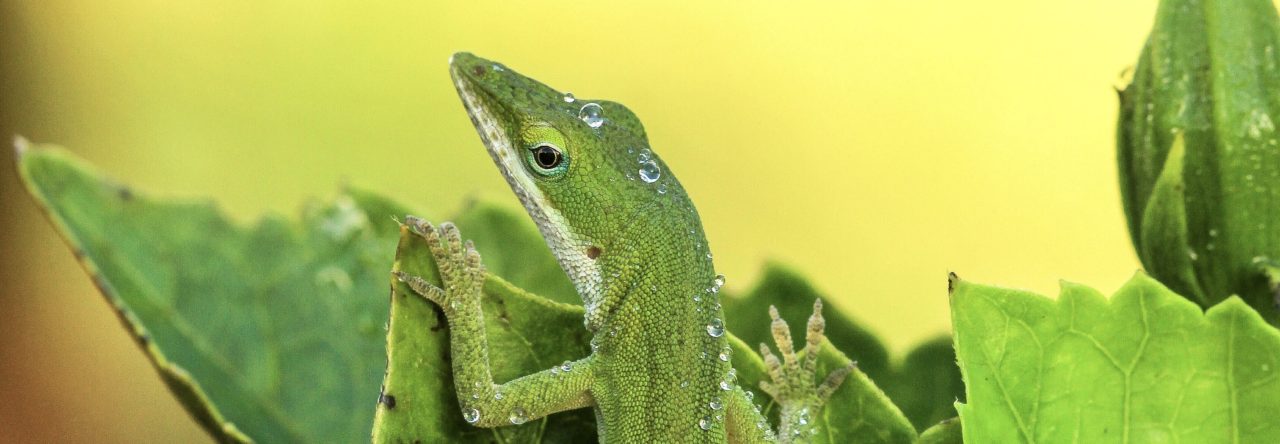On my way to teach biology lab the other day, I ran into this female knight anole (actually, my buddy Zack is the one who spotted it). She was obviously spooked by us and after snapping a few photos I backed off to see if she would continue nesting. After a few seconds she returned to her task. I don’t know why I imagined anoles would dig with their hind legs, but for some reason I did. However, she continued to excavate with alternating strokes of her front feet. Unfortunately I had to run to a meeting, but when I returned a few hours later her hole was still there. Zack had stayed behind to watch her progress and reported that she had aborted the endeavor when a bicyclist whizzed past a bit too close. The hole was about 4 centimeters deep and 5 wide into the mineral soil when she left.

Female Knight anole observed digging nest at the base of a large fig tree. Note the soil under her front claws and on her snout. Observed July 2012.
This is the second time I’ve seen nesting knight anoles in Miami. The first was last summer when I found a very healthy looking female at the base of a fig tree. There was dirt on her snout and a small hole where she had been. In both cases, the nesting females were within 1 meter of a tree, and both were excavating with their front feet and possibly their snout. Also, the dates of each observation show that there is a protracted nesting season in South Florida that includes April 10th to July 20th. Such a long season explains the variable size of first year knight anoles that I find during the spring.







 Rob Heathcote posted this photo as a comment on Sean Giery’s
Rob Heathcote posted this photo as a comment on Sean Giery’s 







